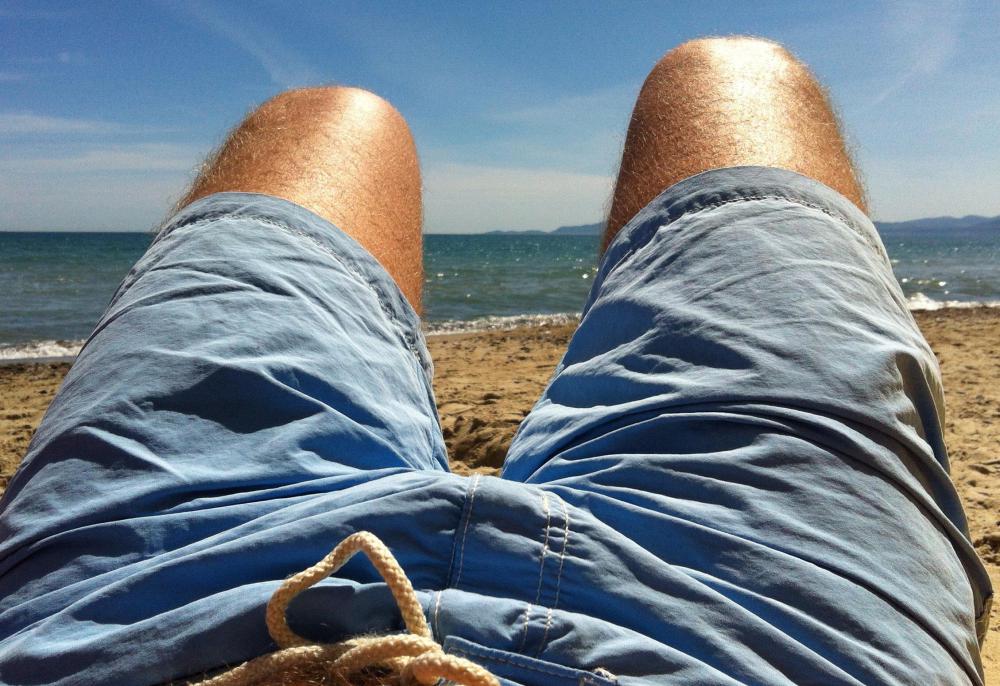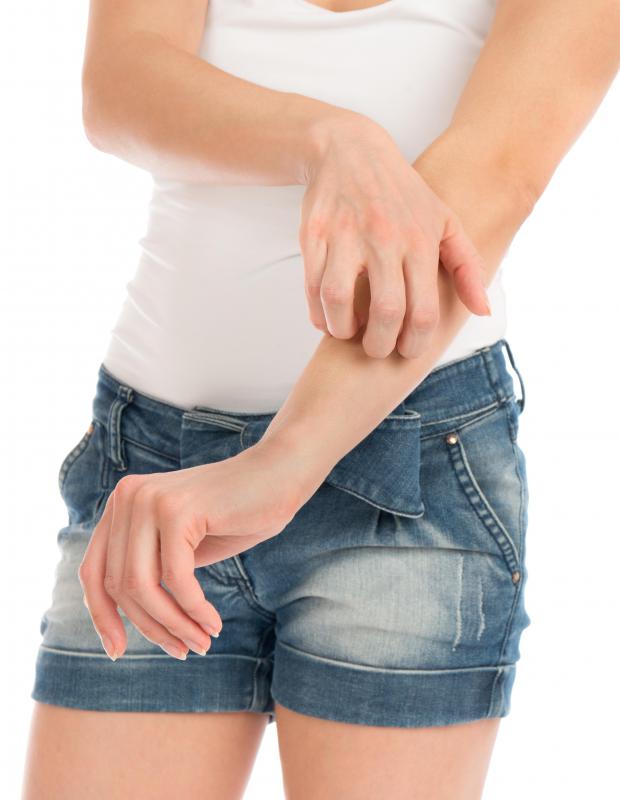At AllThingsNature, we're committed to delivering accurate, trustworthy information. Our expert-authored content is rigorously fact-checked and sourced from credible authorities. Discover how we uphold the highest standards in providing you with reliable knowledge.
What Is a Sand Flea?
A sand flea is a small crustacean in the Talitridae family that can inflict a painful bite. There are several different types of sand flea, all of which live in sandy coastal areas. They feed in the early morning or evening and will attack anything, including humans and animals, that comes near them. Different species of sand flea are known as mole crab, sand fly, and Chigoe flea.
The life cycle of a sand flea begins when the female lays eggs. This occurs after she has fed on blood which is necessary for her to reproduce. She usually lays around 50 eggs per day, which she carries with her until they hatch into larvae a few days later. After hatching, the pupae grow inside cocoons from which they will emerge as adult fleas. Depending on weather conditions and food supply, this process can take anywhere from two weeks to several months.

These types of fleas are light brown in color which makes them very difficult to spot in the sand. Most of them are also very tiny, less than 1/8th of an inch (3.5 mm) long, although the mole crab is larger and may be over 1 inch (2.5 cm) long. Despite their small size, they are able to jump as high as 16 inches (40 cm) to deliver a bite that can cause intense itching and pain. Sand fleas can carry leishmaniasis, which is a dangerous type of malaria. They have also been known to burrow into the skin like chiggers, which may lead to dangerous bacterial infections.

Sand flea bites can be prevented by spraying the body with an insect repellant which contains DEET before visiting a beach. Swarms of these pests can be detected because they create a loud, high pitched whining sound in large numbers. This sound should be taken as a warning for beachgoers to leave the area to avoid being bitten.
The larger sand flea known as mole crab has also been known to feed on and even kill very large fish and whales. Numerous sand fleas attach themselves to them and eat holes through their bodies. Once they reach the inside of a fish, they feed on the blood and meat.

When they are not feeding on animals or humans, sand fleas consume plankton and organic matter. This includes rotting seaweed that collects on their antennae as the tide rolls in and recedes. They stay in areas where the sand remains waterlogged, burrowing into it to stay warm. Mating season is in mid-summer, and it is at this time that large colonies of sand fleas can be found congregating in the sand.
Frequently Asked Questions
What exactly is a sand flea?
A sand flea, also known as a mole crab, sand crab, or beach flea, is a small crustacean that lives in the intertidal zone of sandy beaches. Despite its name, it is not a flea and does not bite or parasitize humans. Sand fleas are important in the food chain, serving as prey for fish and birds.
Can sand fleas cause harm to humans or pets?
Sand fleas typically do not harm humans or pets as they are not bloodsucking parasites like the true fleas. However, in some regions, the term "sand flea" can refer to other biting insects that may cause irritation or allergic reactions. It's important to identify the specific creature when discussing potential harm.
Where can you commonly find sand fleas?
Sand fleas are commonly found along coastal regions worldwide, particularly in the swash zone where waves wash up on the beach. They burrow into the sand to protect themselves from predators and to filter plankton and detritus from the water for food.
What do sand fleas eat?
Sand fleas are detritivores and filter feeders, meaning they consume organic matter such as decaying plants and animals, as well as microscopic organisms like plankton. They use their antennae to filter food particles from the water as waves recede, playing a crucial role in beach ecosystems by recycling nutrients.
How do sand fleas reproduce?
Sand fleas reproduce through a process called spawning, where females release eggs into the water, which are then fertilized by males. According to marine biologists, a single female can produce up to 45,000 eggs per year, ensuring the continuation of their species despite being preyed upon by many animals.
Are sand fleas important to the environment?
Yes, sand fleas are ecologically significant. They contribute to the health of sandy beach ecosystems by aerating the sand as they burrow and by serving as a key food source for birds, fish, and other marine animals. Their role in nutrient cycling also supports the productivity of coastal habitats.
AS FEATURED ON:
AS FEATURED ON:













Discussion Comments
You really never know when sand fleas will be present, unless you hear a swarm of them. I have heard some people say that they are more active right after sunrise and when it's cooler out, but I got bitten around noon on a hot, sunny day.
Right after being bitten, my friend and I heard a weird noise. It sounded like the high-pitched buzz that an old TV will emit sometimes. Luckily, she knew that this meant sand fleas were swarming in the area, and we were able to get out of there before being completely overtaken by them.
I sure am glad we had that warning. I could take being bitten by one sand flea, but a group of them would be too much for me to handle.
I have seen a girl with a sand flea infestation, and it was not a pretty sight. She had gotten attacked by several of them on her leg, and instead of just biting her and departing, they had burrowed into her skin.
She had come into the doctor's office while I was there, and we struck up a conversation in the waiting room. Her left calf was covered in red welts, and she said they had grown since she had been bitten. She had to have the doctor remove the sand fleas from her skin.
She had read that sand fleas could cause blood clots if you just left them in your skin. That was enough to make her seek medical help.
@shell4life – I have been bitten by one, and it is just as painful as a jellyfish sting. In fact, that is what I though I had, until I noticed that no jellyfish were present in the shallow water where I had been wading.
As soon as I got bitten, I ran to the shore and looked at the area. It didn't have any of the purple tentacle marks associated with a jellyfish sting, and I hadn't seen anything bite me.
My friend said that it was a sand flea, and in a few minutes, she also got bitten. She screamed and complained just as much as I had.
We put calamine lotion on the bites, and this seemed to help a little. There was really nothing we could do for the pain, though. It just had to run its course.
Has anyone here ever been bitten by a sand flea? How painful would you say it is?
I am a little worried after reading this article, because I am planning to go to the beach in July. That is right in the middle of the summer, when the sand fleas should be primed and ready to attack.
I suppose I will be packing insect repellant to use on top of my sunscreen. I may not smell very good at the beach, but at least I will be doing all I can to protect myself.
Post your comments